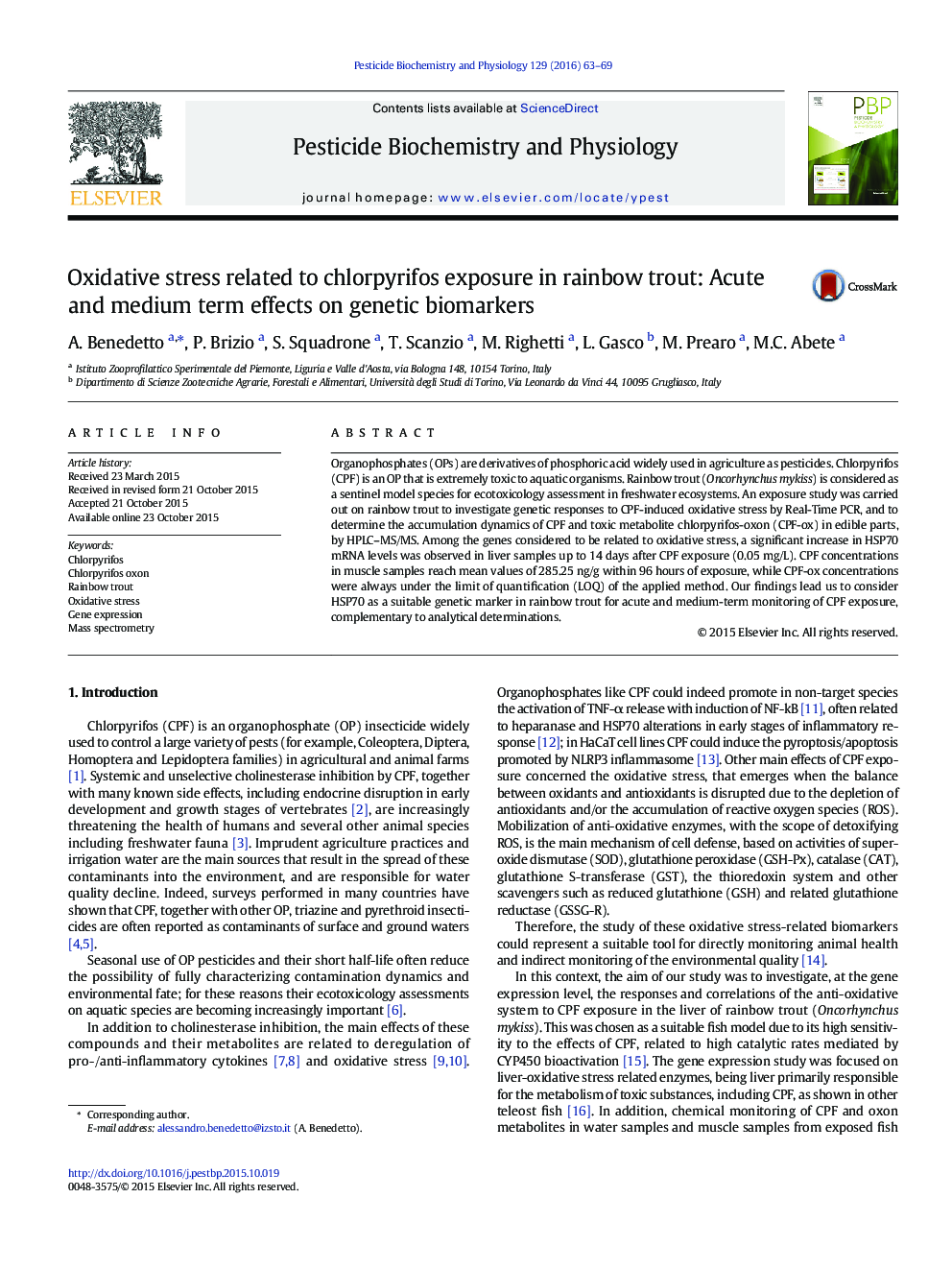| کد مقاله | کد نشریه | سال انتشار | مقاله انگلیسی | نسخه تمام متن |
|---|---|---|---|---|
| 2008972 | 1541770 | 2016 | 7 صفحه PDF | دانلود رایگان |
• A 96-hour exposure to CPF was performed, followed by 28 days of detoxification.
• CPF and CPF-ox residues in water and muscle samples were monitored by HPLC–MS/MS.
• Oxidative stress in liver was checked on genes involved in ROS detoxification.
• HSP70 expression in liver was significantly increased up to 14 days after exposure.
Organophosphates (OPs) are derivatives of phosphoric acid widely used in agriculture as pesticides. Chlorpyrifos (CPF) is an OP that is extremely toxic to aquatic organisms. Rainbow trout (Oncorhynchus mykiss) is considered as a sentinel model species for ecotoxicology assessment in freshwater ecosystems. An exposure study was carried out on rainbow trout to investigate genetic responses to CPF-induced oxidative stress by Real-Time PCR, and to determine the accumulation dynamics of CPF and toxic metabolite chlorpyrifos-oxon (CPF-ox) in edible parts, by HPLC–MS/MS. Among the genes considered to be related to oxidative stress, a significant increase in HSP70 mRNA levels was observed in liver samples up to 14 days after CPF exposure (0.05 mg/L). CPF concentrations in muscle samples reach mean values of 285.25 ng/g within 96 hours of exposure, while CPF-ox concentrations were always under the limit of quantification (LOQ) of the applied method. Our findings lead us to consider HSP70 as a suitable genetic marker in rainbow trout for acute and medium-term monitoring of CPF exposure, complementary to analytical determinations.
Figure optionsDownload as PowerPoint slide
Journal: Pesticide Biochemistry and Physiology - Volume 129, May 2016, Pages 63–69
